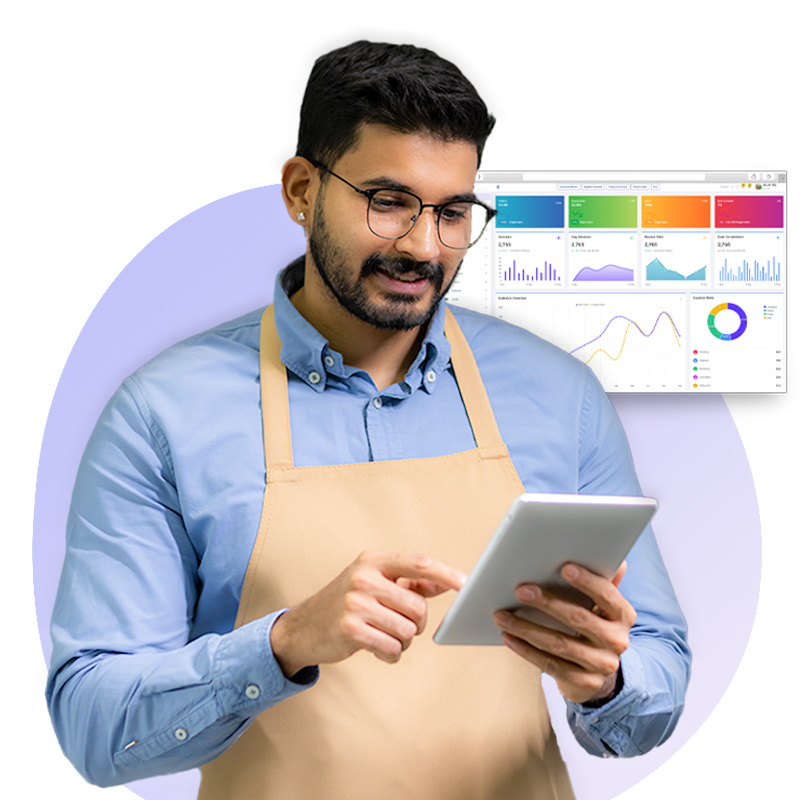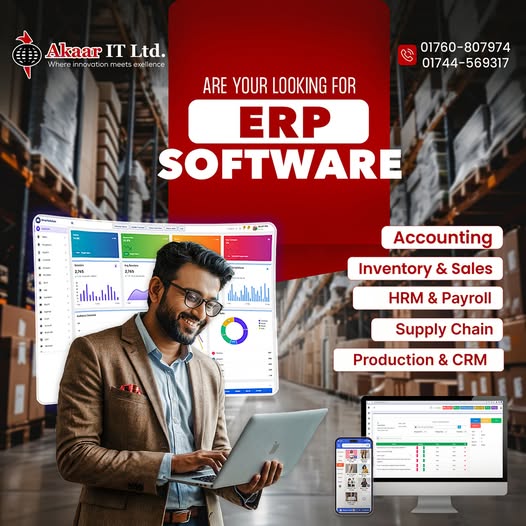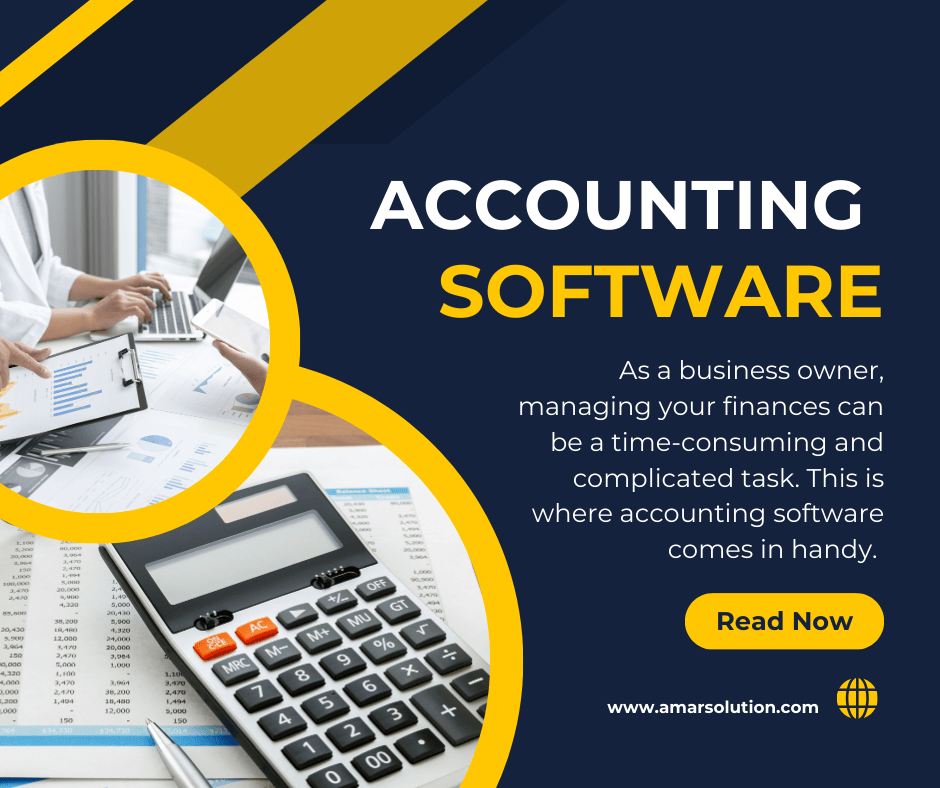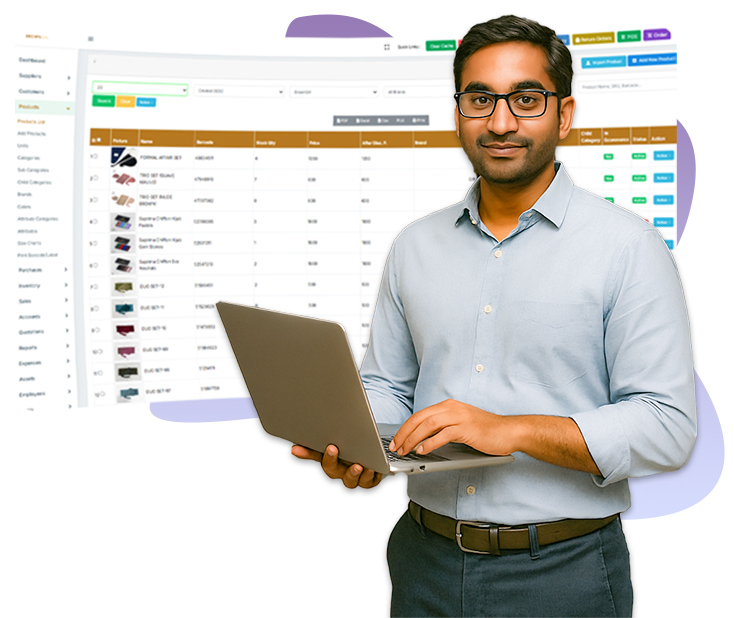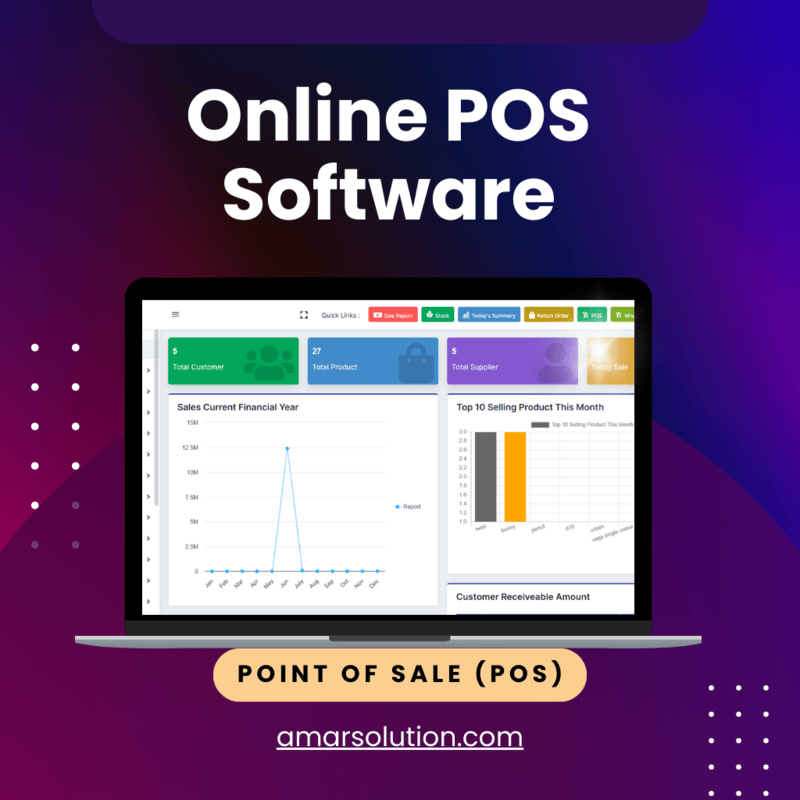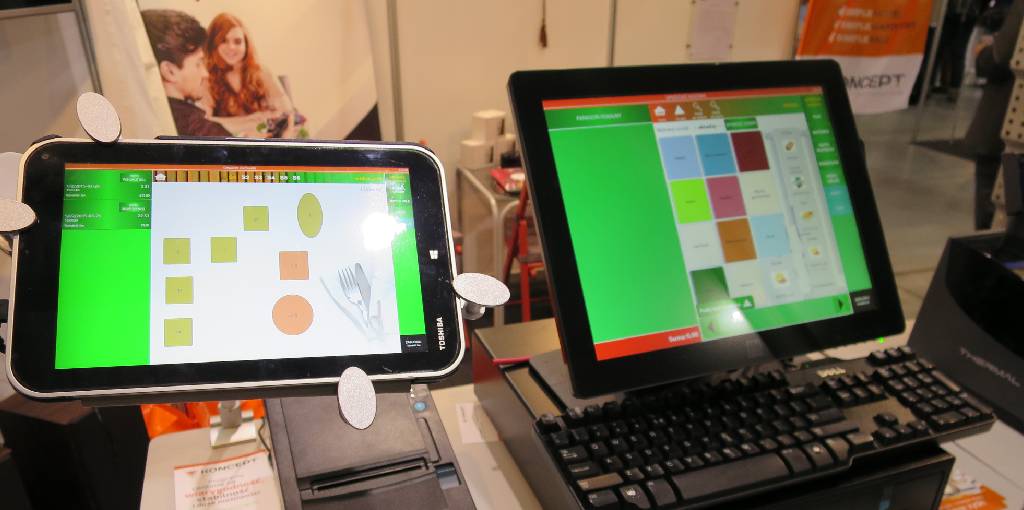POS Machine in Bangladesh – Smart Billing for Smart Businesses
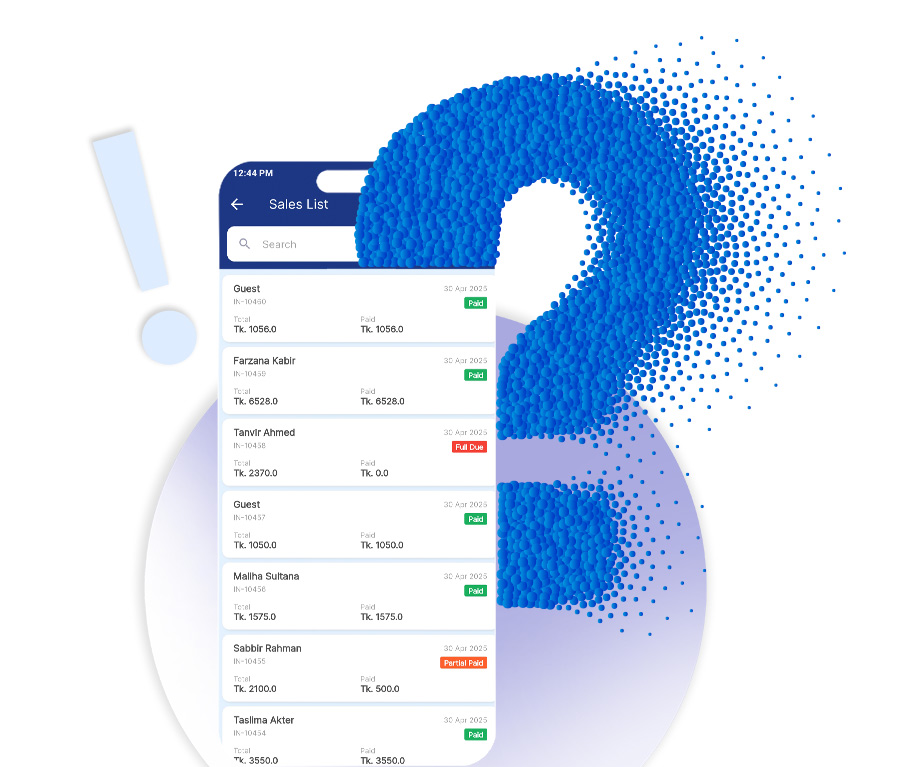
With the digital world around us changing more and more rapidly, companies around the world are rapidly adopting the latest technology that helps them streamline their business and create better user experiences to drive growth. One of the most disruptive technologies in the retail and service industries is the point of sale (POS) machine. Rather than simply being a way to move transactions through the system, POS technology has grown to become transformational, helping companies to manage inventory, control costs, and maintain relationships with customers, sometimes seemingly all at once. With the continuous advancement of technology principles, POS machines are developed to be more user-friendly, flexible, and necessary.
What is a POS machine?
The POS machine is fundamentally software that is operated to conduct sales transactions in any retail establishment or, in the case of the shops, to conduct buy-and-sale transactions for any products, etc. It also often refers to both the hardware and software. The hardware consists of a computer, barcode scanner, receipt printer, cash drawer if you’re using one, and often a touchscreen. The company’s software, meanwhile, provides crucial functions such as payment processing, inventory management, and sales performance data.
Aside from this basic role, contemporary POS systems may likewise include many different features, such as CRM options, loyalty programs, and extensive, feature-rich reporting capabilities. POS systems today have become a vital part of any business, which automates the process for businesses that make sales on a continuous basis that can handle not only transactions but a business as a whole.
The Evolution of POS Systems
POS systems have changed a lot over the years. The first POS machines were created with the simple goal of replacing manual cash registers and making payments faster and more secure, but it’s continued to evolve from there. POS systems in the past used to be big and expensive, affordable only to big companies. Most of their transactions were over credit and debit, which meant they were a step up the payments processing chain from cash.
But with the advancement of technology, the features in POS systems grew exorbitantly. The electronic POS era was a major milestone. These systems could receive card payments and store sales records, track inventory levels, and produce reports. -AFP Though they were initially expensive and complex, these advancements paved the way for businesses of all sizes, from local merchants to multinational corporations.
Perhaps one of the major developments in the POS sector has been the introduction of cloud-based solutions. Contrary to old systems where companies had to save their data on local servers or physical servers, cloud POS systems can save data on remote servers. This offers businesses more flexibility and accessibility to manage and oversee their business, almost anywhere in the world.
The Contemporary POS Machine: Characteristics and Advantages
The new POS terminal is not merely a register—it is a full on management solution for business. These are a few of the amenities current POS systems provide today:
Advanced Payment Processing: POS systems today have evolved to accommodate an extensive array of payment options, which include not just traditional credit and debit cards, but newer options such as mobile wallets (Apple Pay, Google Wallet) and contactless payments. If you're a business who's looking inward and neglecting to recognize the growing trend of the convenience-wanting customer, then your competitors who offer these futuristic payment types will get ahead by delivering new levels of customer satisfaction and loyalty.
Comprehensive Inventory Management: For many companies, stock management is one of the most difficult aspect of their business, specifically retail and food service businesses. Today’s POS systems have solved this problem with up-to-the-second inventory tracking. For businesses, as they make sales, they can track their stock levels so they always know what is and isn’t available for restocking. This is also good in reducing overstock and stock outs which are all potential sources of lost sales.
Sales Reporting and Analytics: High-end POS systems have robust reporting and analytics features which help business owners view their sales data in-depth. These reports might also tell you which products are selling well, which are not, when volumes are at their peak and possibly even a demographic breakdown of your buyers. This information helps companies in taking decisions in regards of inventory, pricing, promotions, and sales and marketing planning.
CRM—Customer Relationship Management: Most recent POS systems include CRM functionality, which allows the business to create and preserve customer information. These profiles contain meaningful data like purchase history, preferences, and contact information. Businesses can develop personalized marketing campaigns, loyalty rewards, and more tailored shopping experiences by recognizing how customers shop. This in turn leads to customer retention and higher sales.
Integration with Other Business Software: In today’s business world, organizations use so many software programs to carry out their business activities. There are pos systems that can connect with other business systems like accounting systems, payroll systems, or e-commerce platforms. This smooth flow of data lessens the need for manual data entry and error, and well as ensures that all parts of a business operate together.
Cloud Flexibility: Perhaps the most amazing thing about the cloud and cloud-based POS systems is flexibility. Cloud-based solutions give companies the ability to access their data from anywhere with an internet connection. This helps managers to monitor operations remotely, like when they are not physically present at the store location. Moreover, cloud-based solutions allow for remote updating, meaning businesses never have to stick with outdated features or security.
Employee Management and Payroll: Some newer POS systems also have features to help employers manage staff, track hours, schedule shifts and even process payroll for their employees. Through this simplification of the administrative process, companies can save time and reduce the chance for errors. Employee utilization can also be monitored, giving lightning-fast visibility into sales per employee and individual productivity.
The Future of POS Machines
Since technology is rapidly advancing, so are POS systems. Here are some of the trends and new technologies that will define the future of POS systems:
AI and Machine Learning: One of the recent exciting advancements in the POS industry is the incorporation of AI and machine learning. These technical capabilities can disrupt how businesses work with their P.O.S systems. AI can look through vast amounts of data to spot patterns and even forecast customer behaviors, allowing businesses to optimize operations. For instance, AI-powered POS (point of sale) systems could recommend products customers are most likely to buy based on their previous purchases or what products are most likely to become sold out soon, enabling businesses to have better control over their inventory.
Mobile POS Systems: The emergence of mobile devices, including smartphones and tablets, also led to the advent of mobile POS systems. These set-ups enable businesses to process payments literally anywhere — be that on a physical counter, on the sidewalk, or even at a pop-up shop or moving outdoor event. Mobile POS is especially convenient for companies who are required to make sales on the go or who want to provide a versatile or customized sales experience.
Biometric Authentication: As users become more cautious of security and scams, biometric authentication will soon become a part of POA systems. Biometric tools like fingerprint scanning and facial recognition could tap into PIN codes and passwords, making users even more secure and customers feel more comfortable with the system - as well as the businesses hosting their personal data. This would also help minimize the threat of chargebacks and other fraudulent transactions.
Payments Without Physical Connection: With digitization and technology philosophy playing a crucial role in driving payments, the cashless ecosystem is likely to be complemented with contactless forms of payments across the spectrum. POS systems will keep on changing and will want to handle these new payment methods along with NFC (near field communication), so customers can pay by tapping cards or mobile devices for transactions. Such payments are and will remain a quick and convenient alternative for the consumer, particularly in busy types of retail.
Integration with IoT is revolutionizing the retail and services industry, and POS systems are not left behind. Next-gen POS systems might be linked with devices of the Internet of Things (like smart shelves that can show real-time inventory usage information and smart fridges that notify managers when the stock is going to end or when their edible goods are going to expire). These moash’aar will help organizations to operate more efficiently and effectively.
Blockchain for Security of Payment: To secure the POS systems, the blockchain technology, which has been a proven and powerful technology running the cryptocurrencies (Bitcoin), appears to have the potential. In doing so, it would make fraud and data breaches much less likely to help ensure that both customer and business data are safe and secure.
Conclusion
POS systems are no longer just cash registers. Modern POS systems are like complex machinery that does not just process payments, but also organizes inventory, monitors customer actions, and generates business intelligence. The future of POS is indeed very exciting, as systems, like AI, mobile payments, and IoT integrations, provide numerous opportunities for businesses to enhance their operations and customer experience.
For companies that want to remain competitive in an era of ever-increasing digitalization, it’s more important than ever to invest in the best POS technology. With the ongoing innovation within POS systems, this will only become more important, contributing tools that help businesses make well-informed decisions, improve their customer service and succeed within a constantly changing market.

